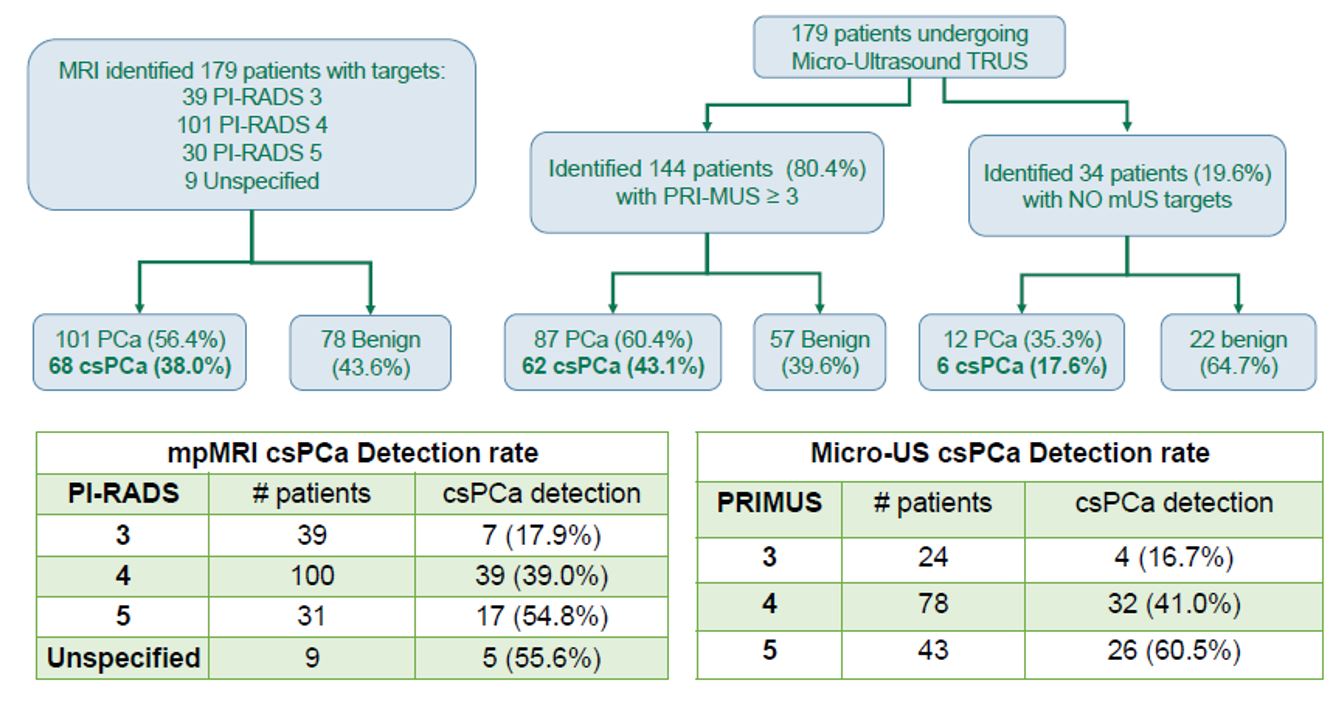In this study – the authors examined the efficacy of a micro-US as a new diagnostic approach to targeted biopsies. Moreover, the authors compared the diagnostic accuracy of micro-US with mpMRI in a prospectively collected cohort of patients with suspected prostate cancer.
The study population consisted of 179 consecutive patients with at least one suspicious lesion (PIRADSv2≥3) according to mpMRI. All patients were enrolled within a prospective trial aimed at comparing the diagnostic accuracy of micro-US and mpMRI. The PRI-MUS risk identification protocol was used to identify targets on micro-US. The urologist, newly trained on performing the micro-US targeted-biopsies, was blinded to the mpMRI results until after the micro-US targeting was complete. All patients received targeted biopsy (based on micro-US and mpMRI imaging) and systematic random biopsies. The concordance between mpMRI and micro-US findings and biopsy results were determined. Figure 1 demonstrates the trial design.
Figure 1 – Trial design:

The diagnosis of any prostate cancer and clinically significant prostate cancer (Gleason score >=7) was assessed. The concordance between mpMRI and micro-US and the biopsy results was determined.
The results demonstrated that the prostate cancer detection rate was 56.5%, and the clinically significant prostate cancer detection rate was 38%. As the PRI-MUS score and PIRADS score increased, so did the proportion of patients with clinically significant prostate cancer. A total of 111 concordant target zones between micro-US and mpMRI were identified, of which 50 were clinically significant cancer. Figure 2 demonstrates a summary of the results.
Figure 2 – Study results:

In conclusion, micro-US is a promising new imaging modality for targeted prostate biopsies, enabling high sensitivity of 91.2% in prostate cancer detection. Further studies are warranted to investigate how the new micro-US modality can best be leveraged within the prostate cancer diagnostic pathway.
Presented by: Davide Maffei, MD, Humanitas Clinical and Research Center, Department of Urology, Rozzano, Italy
Written By: Hanan Goldberg, MD, Urologic Oncology Fellow (SUO), University of Toronto, Princess Margaret Cancer Centre @GoldbergHanan at the 34th European Association of Urology (EAU 2019) #EAU19, conference in Barcelona, Spain from March 15-19, 2019.


